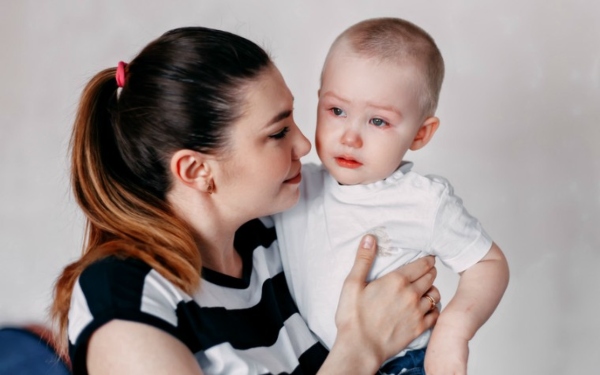
 This article presents a few key pieces of advice from Community Care Inform Children’s guide on applying the principles of attachment theory to social work assessments, which was first published in February 2015 and updated in April 2023. The full guide explores attachment theory and how to apply principles such as emotional regulation and mentalization to better understand parent-child relationships, behaviours and assess risk. Inform children subscribers can access the full guide here.
This article presents a few key pieces of advice from Community Care Inform Children’s guide on applying the principles of attachment theory to social work assessments, which was first published in February 2015 and updated in April 2023. The full guide explores attachment theory and how to apply principles such as emotional regulation and mentalization to better understand parent-child relationships, behaviours and assess risk. Inform children subscribers can access the full guide here.
The guide is written by Alice Loving, a practitioner, academic and trainer specialising in parenting assessments, attachment, trauma and mentalization. Alice is a lecturer at the Centre for Child Protection at Kent University.
This extract focuses on a key principle of modern attachment theory – mentalization – in relation to parenting behaviours.
The capacity to mentalize
The capacity to mentalize is “the ability to understand behaviour in light of underlying mental states and intentions” (Slade 2005).
Mentalizing means you can make links between how your own thoughts and feelings influence your behaviour. We also mentalize for others – attuning to what another person may be thinking or feeling and how this may be impacting their behaviour.
This capacity is particularly important in parenting. Some parents may struggle to understand that their child has different needs, experiences and feelings to theirs. Some parents feed their child when they, the parent, are hungry, not when the child is; or overstimulate the child because they, the parent, are bored.
Concern can arise when parents/carers are consistently unable to demonstrate mentalization – especially when the child is significantly distressed.
Practice example
A parent finds the intimacy of feeding her baby uncomfortable (due to her own trauma history), so in order to get feeds over with more quickly, she bites holes in the bottle teats to make them larger, so the milk comes out quicker. She is not then connecting with the experience of the baby and how it may feel for her to try to drink the fast-flowing milk, and, as a result, much of the feed is lost as it spills from her mouth.
Assessing parental mentalization
You can explore this with a parent by asking questions such as: “If your baby was speaking right now, what do think she’d be saying? And what would you say back?”
You can gauge a parent’s capacity to mentalize with their child by asking questions such as:
- What are your child’s likes and dislikes?
Most children have items of food, toys or activities that they are particularly fond of, and others that they may dislike. For the parent to be aware of these likes and dislikes can demonstrate not only their attunement to what is in their child’s mind, but also the way in which they view them as an autonomous individual.
- Can you give me three to five words that describe your child?
Once they select a word, ask the parent to describe a recent memory that demonstrates why they chose the word. Pay attention to whether the parent describes things that are internal to the child (eg happy, considerate, wilful, independent, clever) – which indicate a sense of their child’s internal world, as opposed to ways they behave and physical or factual attributes.
- What do you enjoy doing together?
A key aspect of the ‘secure base’ element of the attachment relationship is for the child to have a sense that the parent enjoys spending time with them. If this is not the case then this is an important element to focus on during your interventions.
- Is there anything that your child is scared or frightened of?
This question is reliant on the parent reading the potential cues and signals associated with the child’s fear and and entering the child’s mind to fully comprehend what might be causing it.
- What do you do to show your child that you love them?
This question needs to be asked gently and sensitively. It is important to gain an understanding of how a parent’s love is experienced by the child, and this question alone can trigger a moment of reflection for the parent and connection with whether their child might feel loved by them.
- What do they do to show you that they love you?
It may be appropriate but potentially painful to first ask, ‘Do you feel that your child loves you?’, before then exploring ways they feel that the child shows this.
- Tell me what it is like to be mother/father?
This question can generate a large variety of answers. It is often a helpful starting point for exploring what is in the parent’s mind about their child and what they feel is in the child’s mind about them.
- How do you think they would describe their experience of being cared for by you?
This question is an adaptation from George Kaplan and Mary Main’s (1985) ‘Adult attachment interview’ and aims to connect the parent to the child’s lived experience of the care that they provide.
As well as informing assessments, asking questions like these, which prompt a parent to consider their child’s internal states, can help develop their capacity to mentalize with their child. You can also help parents to develop mentalization by modelling it yourself towards them.
If you have a Community Care Inform Children licence, log on to access the full guide, and read more detailed information on attachment theory, assessments, and how to work with and support children and families.





 Family help: one local authority’s experience of the model
Family help: one local authority’s experience of the model  ‘I spent the first three months listening’: how supportive leadership can transform children’s services
‘I spent the first three months listening’: how supportive leadership can transform children’s services  How senior leaders in one authority maintain a culture of excellence
How senior leaders in one authority maintain a culture of excellence  How staff support ensures fantastic outcomes for children and families
How staff support ensures fantastic outcomes for children and families  Workforce Insights – showcasing a selection of the sector’s top recruiters
Workforce Insights – showcasing a selection of the sector’s top recruiters 

 Facebook
Facebook X
X LinkedIn
LinkedIn Instagram
Instagram
Comments are closed.